Hildesheim St. Andreas, 1966 [Hauptwerk]
Hildesheim St. Andreas, 1966 [Hauptwerk]
Impossible de charger la disponibilité du service de retrait
Rudolf von Beckerath Organ, St. Andreas Hildesheim (1965-66)
The organ of the St. Andreas church in Hildesheim was built in 1965-66 by prominent organbuilder Rudolf von Beckerath. It is one of the largest instruments of its kind in Northern Germany. And it must be said, it is one of von Beckerath's best instruments. It has 63 speaking stops with a total of 4,734 pipes on four manuals and pedal. The Swiss organ builder Beat Grenacher participated in the final voicing of the organ. (Grenacher was in later years head of the Goll organ company from Lucerne and was responsible for the rebuilding of the Beckerath organ of Marktkirche Hannover.) The construction of this organ has some unique and innovative features, such as the mechanical action made of composite materials that still functions perfectly after 60 years without the need for any repairs. The organ has two consoles: The upper gallery houses a large 4-manual console and the lower gallery, which offers space for vocal and instrumental ensembles, has a separate single-manual console controlling the Rückpositiv alone. In the decades since its installation, the von Beckerath organ in St. Andrew's Church has become famous far beyond the borders of the city of Hildesheim. Renowned organists from across the globe perform on the instrument and use it for radio and recordings. In 1963, the famous north german composer Hans Friedrich Micheelsen from Hamburg dedicated his last organ concerto "Orgelkonzert VII - Der Morgernstern" to Reinhold Brunnert, the organist of St. Andreas at that time, to be performed during the inauguration concert.
In recitals and through recordings, the sound of the Hildesheim organ has inspired an entire generation of organists. American organist Erik Simmons comments: "This organ was important to me when I was learning to play. I first heard it on the Bach CD recorded by Michael Murray when I was just graduating from college in the 1980s. The sound was so different from all the American organs I was hearing at that time. (The CD is on YouTube now; search for "Murray Bach Hildesheim".) Murray's playing is dated by today's standards; he was a student of Dupré, with legato playing and mathematical precision on things like repeated and dotted notes. But those were the Bach editions I learned from back then as well, and the sound from Hildesheim was both ear-opening and inspiring. We "know better" today, but this was the standard at the time."
The organ has the typical features of its time: narrow reeds, smooth foundations voiced with an expressive "chiff", and a plethora of unusual aliquotes that represent the progressive element of organ design in search of new colors that one encounters in many instruments from this period. The reeds of this organ are often best paired with a foundation stop as part of the aesthetics of the time (the so-called "covering" of reeds). Their sound is generally too thin if used alone - though music written at the time this organ was built often has special registrations exploiting these sounds by themselves.
The organ has numerous mixtures and mutations, but unlike many other organs from the same period it is not voiced to "scream" or "pierce". The plenums on each manual are formidable, but balanced and beautiful. The arrangement of the five divisions follows the North German organ building tradition, the so called "Hamburger Prospekt". The organ is strictly built on the Werkprinzip design, so much so that there is no coupler between HW and Pedal. The organ does not need one, because the Pedal is a complete division by itself (and therefore we did not add it in Hauptwerk). A German organ expert advised: "It is particularly important to me that this excellent organ is preserved in its uniqueness. It is not a modern universal organ like Billerbeck or Görlitz, where you can add couplings, stops, etc. almost as desired. If you understand the principle of a baroque organ and its divisions, then you also understand this organ. And this is what you should convey to users: think, pause and recognize the principle of the divisions." The ten largest pipes of the Prinzipal 32' are seen in the façade, the C pipe is around 11m high. They were originally made of zinc, but those pipes were replaced by tin pipes in 1995. The sound of this organ unites remarkably well with the church acoustics. The reverberation time is almost 8 seconds! The generous acoustics of the church contribute to the power and beauty of the sound.
Présenté par Leonart Studio, votre revendeur autorisé pour Sonus Paradisi en Suisse (expédié à l'international). Obtenez vos orgues historiques échantillonnés numériquement pour une utilisation avec le logiciel d'instrument virtuel Hauptwerk.
Partagez cet ensemble d'échantillons
![Hildesheim St. Andreas, 1966 [Hauptwerk]](http://artful.shop/cdn/shop/files/hildesheim1.jpg?v=1759145884&width=1445)
![Hildesheim St. Andreas, 1966 [Hauptwerk]](http://artful.shop/cdn/shop/files/hildesheim2.jpg?v=1759145887&width=1445)
![Hildesheim St. Andreas, 1966 [Hauptwerk]](http://artful.shop/cdn/shop/files/hildesheim3.jpg?v=1759145883&width=1445)
![Hildesheim St. Andreas, 1966 [Hauptwerk]](http://artful.shop/cdn/shop/files/hildesheim4.jpg?v=1759145883&width=1445)
![Hildesheim St. Andreas, 1966 [Hauptwerk]](http://artful.shop/cdn/shop/files/hildesheim5.jpg?v=1759145887&width=1445)
![Hildesheim St. Andreas, 1966 [Hauptwerk]](http://artful.shop/cdn/shop/files/hildesheim6.jpg?v=1759145882&width=1445)
![Hildesheim St. Andreas, 1966 [Hauptwerk]](http://artful.shop/cdn/shop/files/hildesheim7.jpg?v=1759145881&width=1445)
![Hildesheim St. Andreas, 1966 [Hauptwerk]](http://artful.shop/cdn/shop/files/hildesheim8.jpg?v=1759145882&width=1445)
![Hildesheim St. Andreas, 1966 [Hauptwerk]](http://artful.shop/cdn/shop/files/hildesheim9.jpg?v=1759145882&width=1445)
Spécification (liste d'arrêt)
-
Manuel I
I Rückpositiv C–g3
Prinzipal 8′
Rohrflöte 8′
Quintadena 8′
Oktave 4′
Blockflöte 4′
Quintflöte 22⁄3′
Oktave 2′
Gemshorn 2′
Quinte 11⁄3′
Sesquialtera II 22⁄3′
Scharfmixtur V 1 1⁄3′
Dulzian 16′
Bärpfeife 8′
Tremulant
-
Manuel II
II Hauptwerk C–g3
Prinzipal 16′
Oktave 8′
Koppelgedackt 8′
Oktave 4′
Quinte 2 2⁄3′
Oktave 2′
Mixtur VI 2′
Scharf IV 2⁄3′
Trompete 16′
Trompete 8′
Trompete 4′
Glocken -
Manuel III
III Oberwerk C–g3
Quintadena 16′
Violprinzipal 8′
Holzflöte 8′
Oktave 4′
Rohrflöte 4′
Nasat 2 2⁄3′
Hohlflöte 2′
Terz 1 3⁄5′
Septime 1 1⁄7′
Sifflöte 1′
None 8⁄9′
Scharf IV-VI 1′
Klingend Zimbel III 1⁄6′
Englisch Horn 16′
Oboe 8′
Tremulant -
Manuel IV
IV Brustwerk
(schwellbar) C–g3
Holzgedackt 8′
Holzprinzipal 4′
Waldflöte 2′
Gemsquinte 1 1⁄3′
Schwiegel 1′
Schlagtöne III 2⁄5′
Scharfzimbel IV 1⁄2′
Regal 8′
Schalmei 4′
Tremulant
-
Pédale
Pedal C–f1
Prinzipal 32′
Oktave 16′
Subbass 16′
Oktave 8′
Holzflöte 8′
Hornaliquot II
Oktave 4′
Nachthorn 2′
Rauschpfeife III 4′
Mixtur VI 2 2⁄3′
Posaune 32′
Posaune 16′
Trompete 8′
Trompete 4′
Zink 2′
Glocken -
Autres spécifications
Couplers: I/II, III/II, IV/II, I/P, III/P (no HW/Ped coupler)
Histoire
The organ of the St. Andreas church in Hildesheim was built in 1965-66 by prominent organbuilder Rudolf von Beckerath. It is one of the largest instruments of its kind in Northern Germany. And it must be said, it is one of von Beckerath's best instruments. It has 63 speaking stops with a total of 4,734 pipes on four manuals and pedal. The Swiss organ builder Beat Grenacher participated in the final voicing of the organ. (Grenacher was in later years head of the Goll organ company from Lucerne and was responsible for the rebuilding of the Beckerath organ of Marktkirche Hannover.) The construction of this organ has some unique and innovative features, such as the mechanical action made of composite materials that still functions perfectly after 60 years without the need for any repairs. The organ has two consoles: The upper gallery houses a large 4-manual console and the lower gallery, which offers space for vocal and instrumental ensembles, has a separate single-manual console controlling the Rückpositiv alone. In the decades since its installation, the von Beckerath organ in St. Andrew's Church has become famous far beyond the borders of the city of Hildesheim. Renowned organists from across the globe perform on the instrument and use it for radio and recordings. In 1963, the famous north german composer Hans Friedrich Micheelsen from Hamburg dedicated his last organ concerto "Orgelkonzert VII - Der Morgernstern" to Reinhold Brunnert, the organist of St. Andreas at that time, to be performed during the inauguration concert.
Caractéristiques
Encryption
The samples are offered in 48kHz/24bit resolution. The multiple releases have three levels: short, mid and long. Hauptwerk v4.2 and higher supported. The sample set is offered in a plain wave format, no encryption.
Reverb time
The reverb time is ca. 8 seconds.
Keyboards, pedalboard
The original compass of the keyboards is 56 keys, extendable to 58 keys via a mixer switch. The original compass of the pedal division is 30 keys, extendable to 32 keys via a mixer switch.
Tremulants
All ranks of the RW and OW were recorded with and without tremulants for the most convincing tremulant behavior. However, loading the authentic tremmed ranks consumes large amount of RAM. It is possible to select to use the artificial tremulant instead to save RAM (the switch is located on the mixer tab).
Surround format
The sample set is offered in a Surround variant (6 channels). There are direct channels, diffuse channels, and rear channels. To reproduce the surround format, an audio card with at least 4 output channels is required, dedicating the direct and diffuse channels for the front speakers, and other two channels for the rear speakers.
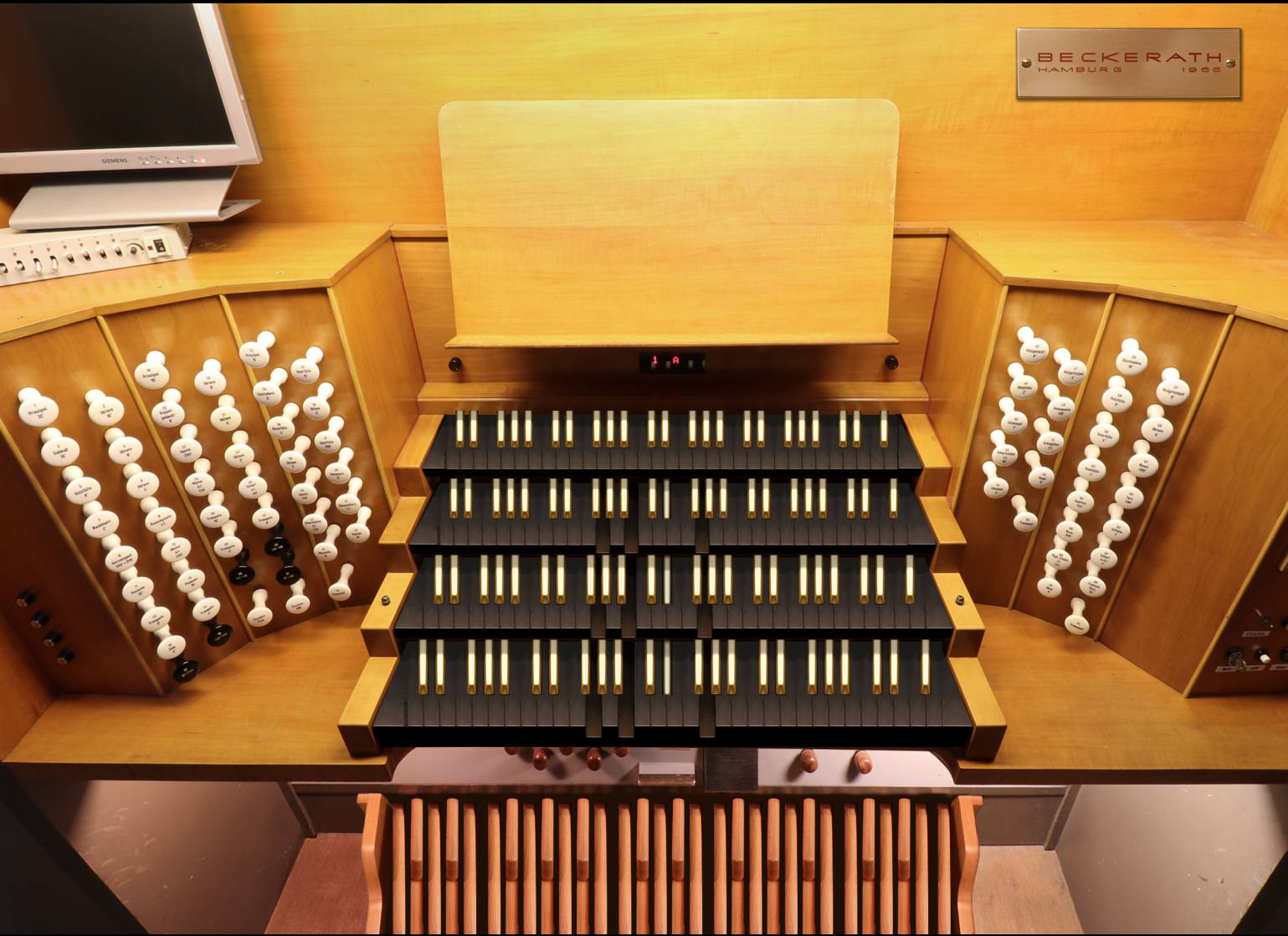
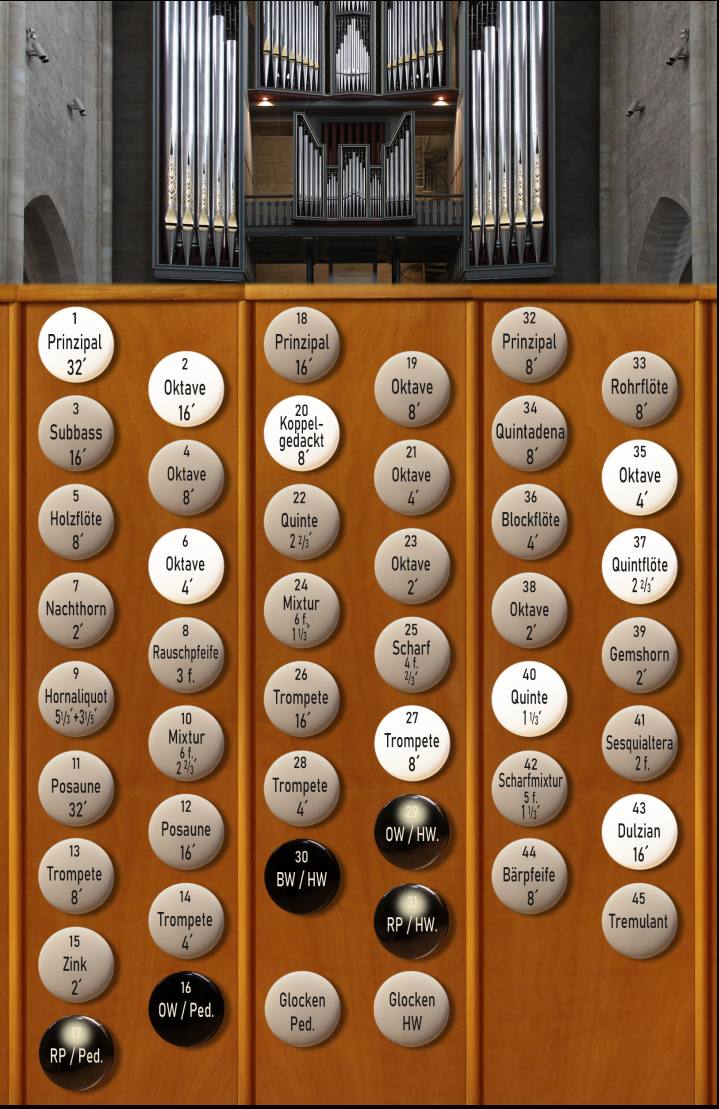
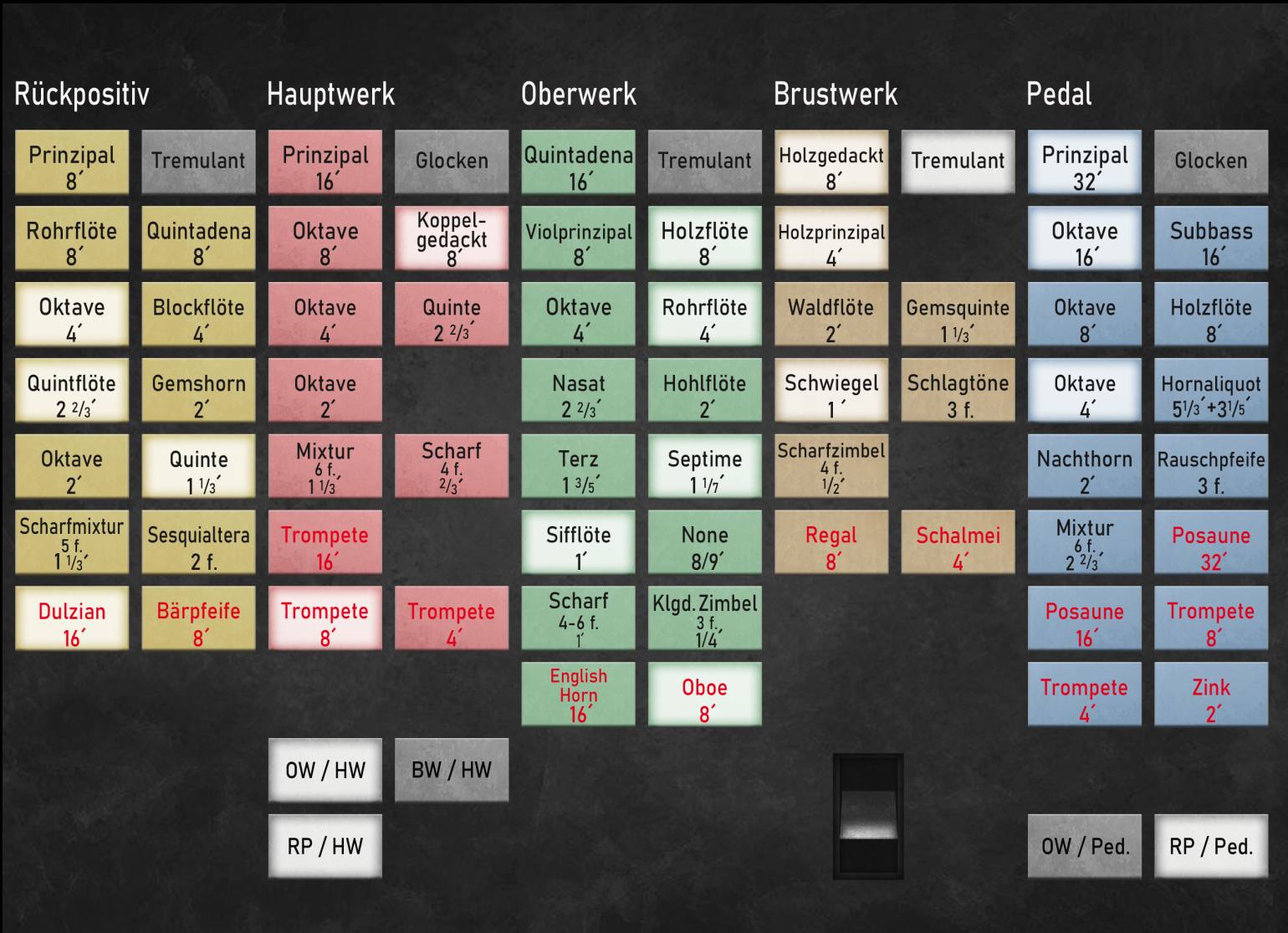

Exigences
Requirements
RAM consumption: 6-channel surround
16-bit, other settings default: 49 GB
20-bit, other settings default: 81 GB
24-bit, other settings default: 91 GB
Screen resolution 1280x1024 px or more.
Polyphony of 12.000 voices recommended for the full suround.
Ce jeu d'échantillons Hauptwerk vous est présenté par Leonart Studio, un revendeur autorisé pour le fabricant Sonus Paradisi en Suisse (expédition internationale). Profitez de cette bibliothèque d'orgue échantillonnée numériquement pour une utilisation avec le logiciel Hauptwerk et commencez à élargir votre collection d'orgues historiques dès aujourd'hui.
Plus de jeux d'échantillons Hauptwerk
-
Casavant, 1995 [Oeuvre principale]
Fournisseur :Sonus ParadisiPrix habituel CHF 174.90Prix habituelPrix unitaire / par -
Bückeburg, 1997 [Oeuvre principale]
Fournisseur :Sonus ParadisiPrix habituel Du CHF 1.10Prix habituelPrix unitaire / par -
Schwerin, Dom, Ladegast Organ 1871 [Hauptwerk]
Fournisseur :Sonus ParadisiPrix habituel CHF 616.00Prix habituelPrix unitaire / par -
Segovia, 1772 [Œuvre principale]
Fournisseur :Sonus ParadisiPrix habituel CHF 317.90Prix habituelPrix unitaire / par -
Reuter, 1928 [Oeuvre principale]
Fournisseur :Sonus ParadisiPrix habituel CHF 473.00Prix habituelPrix unitaire / par -
Rotterdam Hoofdorgel, 1973 [Hauptwerk]
Fournisseur :Sonus ParadisiPrix habituel Du CHF 330.00Prix habituelPrix unitaire / parCHF 958.10Prix promotionnel Du CHF 330.00En vente -
![Groningue, 1450-1740 [Hauptwerk]](//artful.shop/cdn/shop/files/ss_Groningen1.jpg?v=1693275425&width=533) En vente
En venteGroningue, 1450-1740 [Hauptwerk]
Fournisseur :Sonus ParadisiPrix habituel Du CHF 658.90Prix habituelPrix unitaire / parCHF 1,681.90Prix promotionnel Du CHF 658.90En vente -
Frankfurt a.d. Oder, 1975 [Oeuvre principale]
Fournisseur :Sonus ParadisiPrix habituel Du CHF 220.00Prix habituelPrix unitaire / parCHF 550.00Prix promotionnel Du CHF 220.00En vente -
Piacenza, 1838 [Œuvre principale]
Fournisseur :Sonus ParadisiPrix habituel CHF 330.00Prix habituelPrix unitaire / par -
Lüdingworth, 1683 [Oeuvre principale]
Fournisseur :Sonus ParadisiPrix habituel CHF 330.00Prix habituelPrix unitaire / par

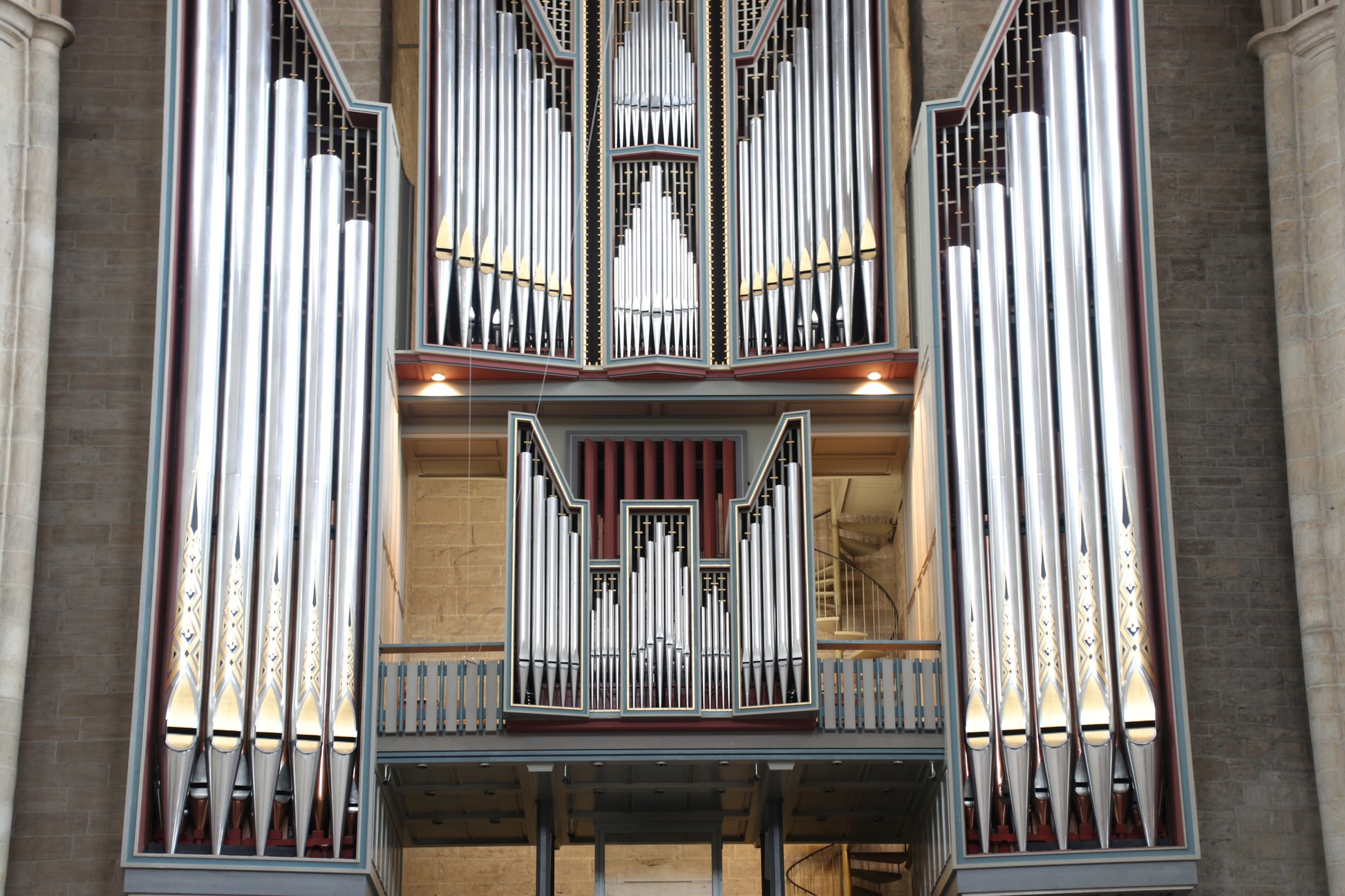
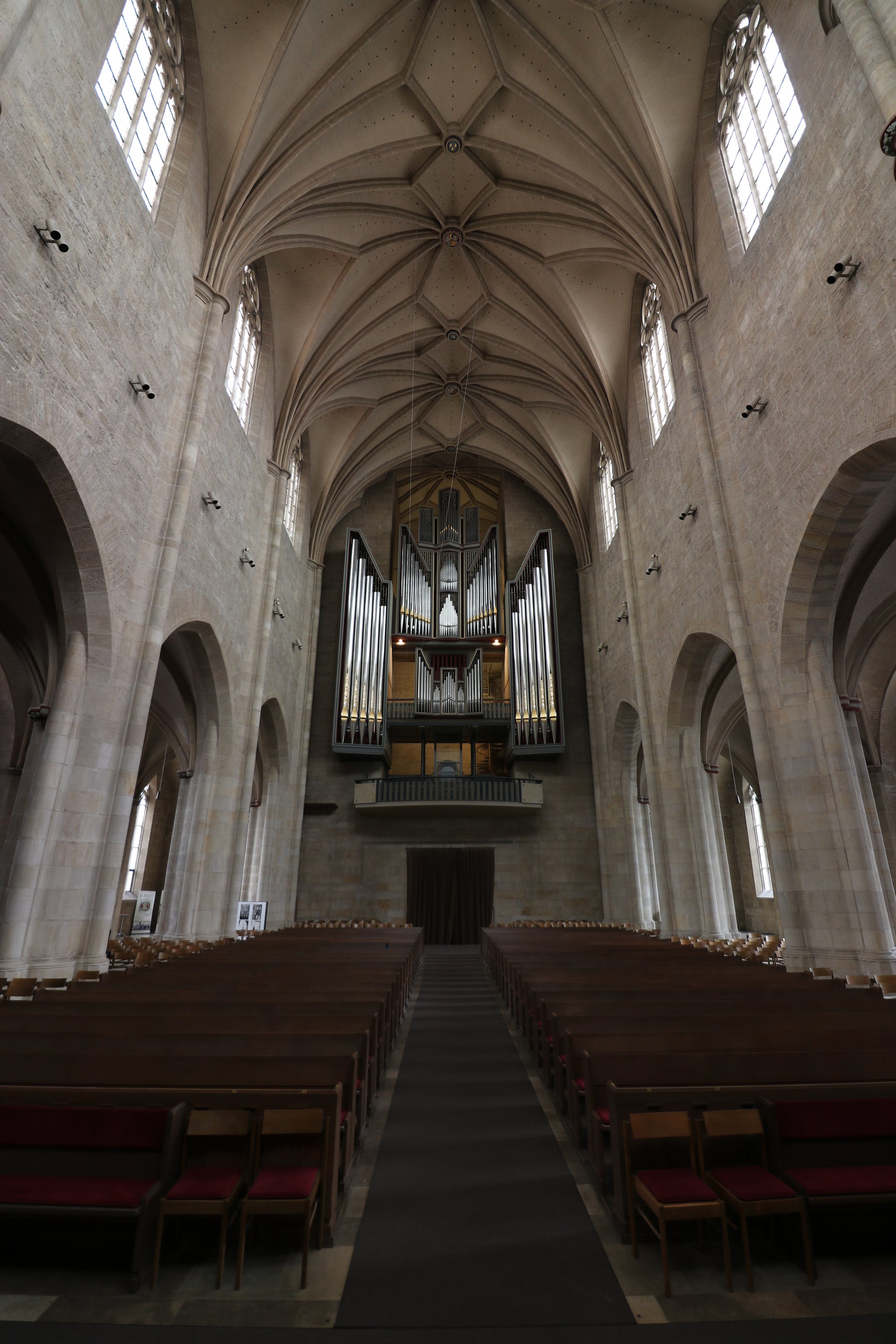
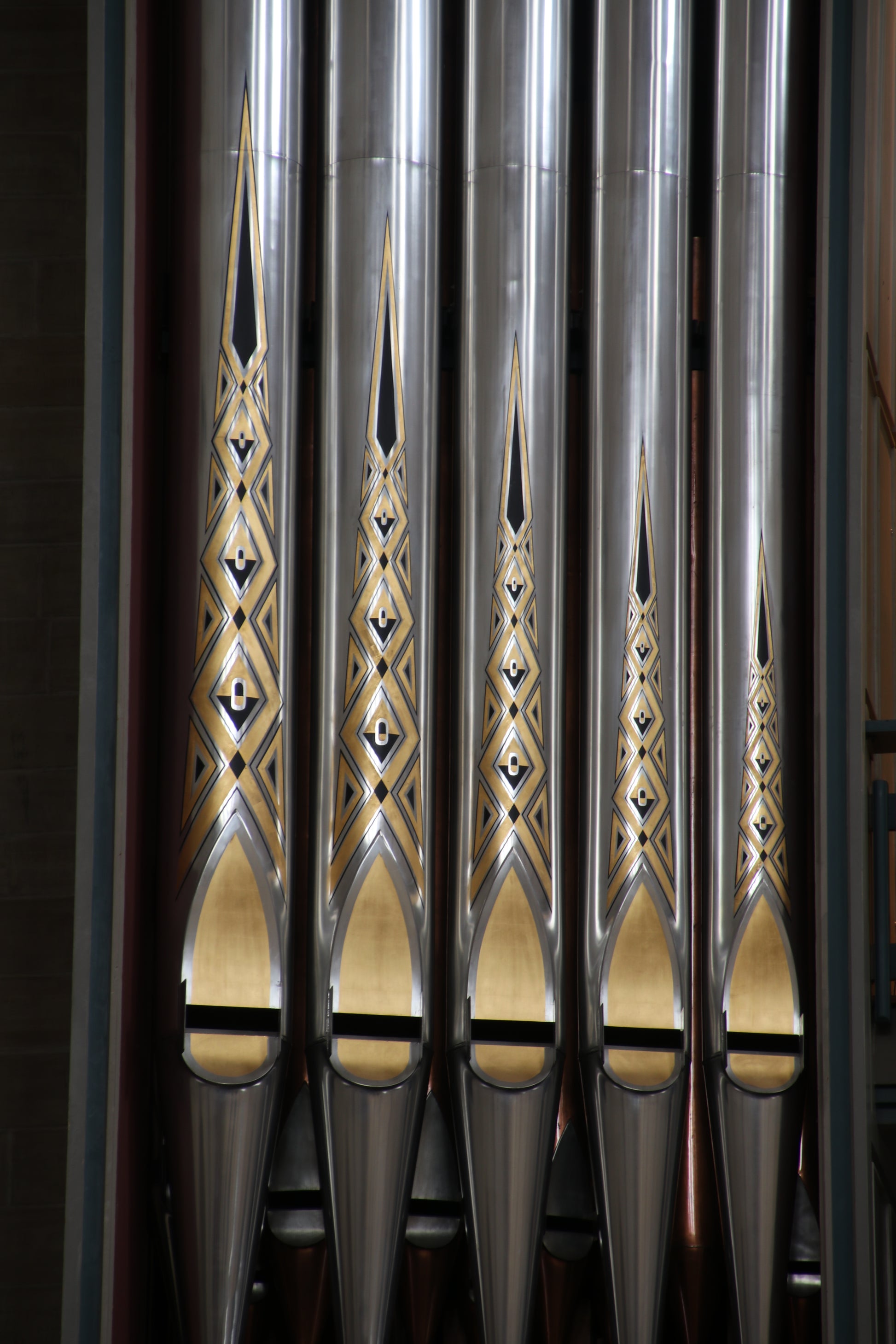
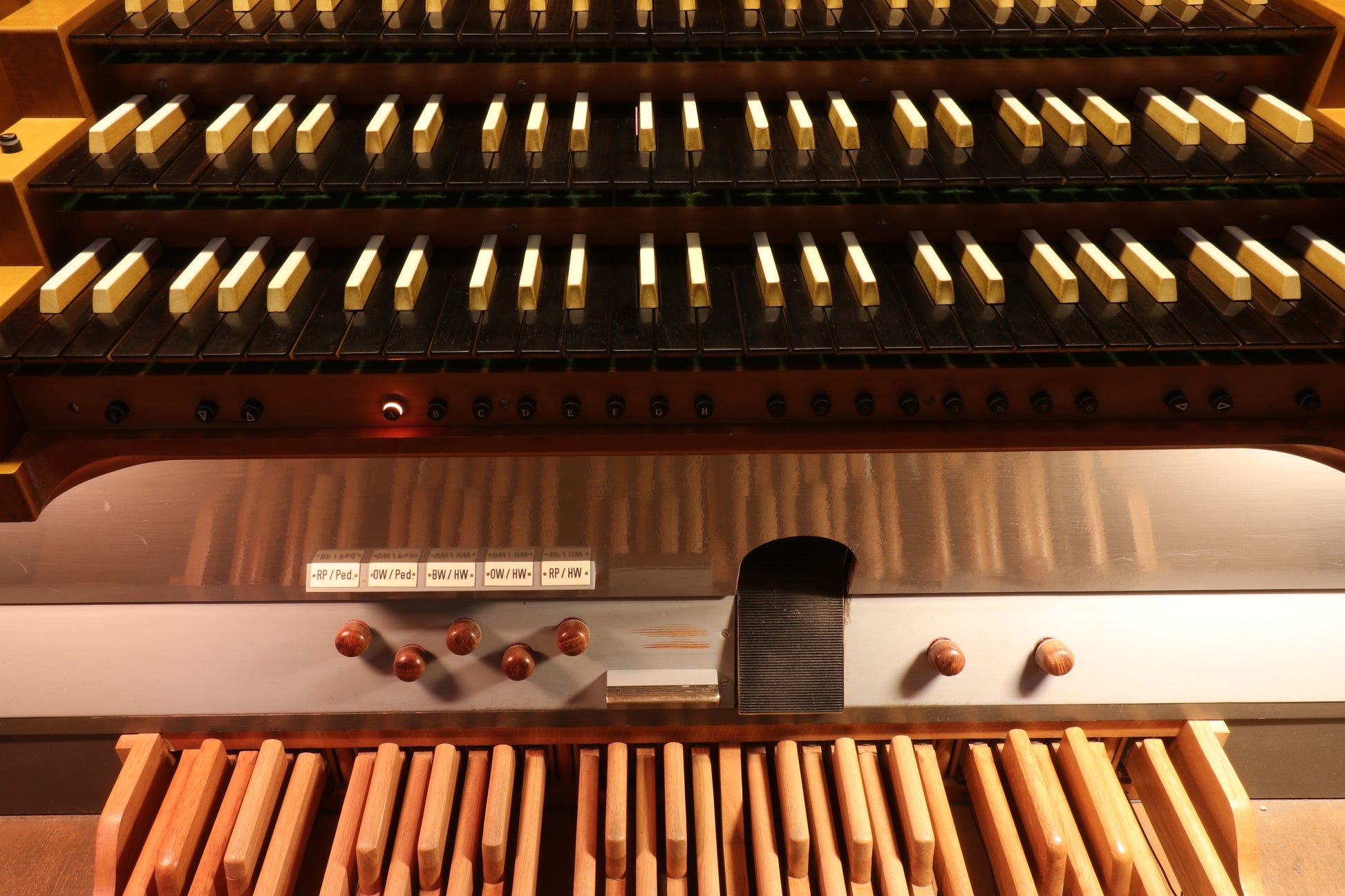
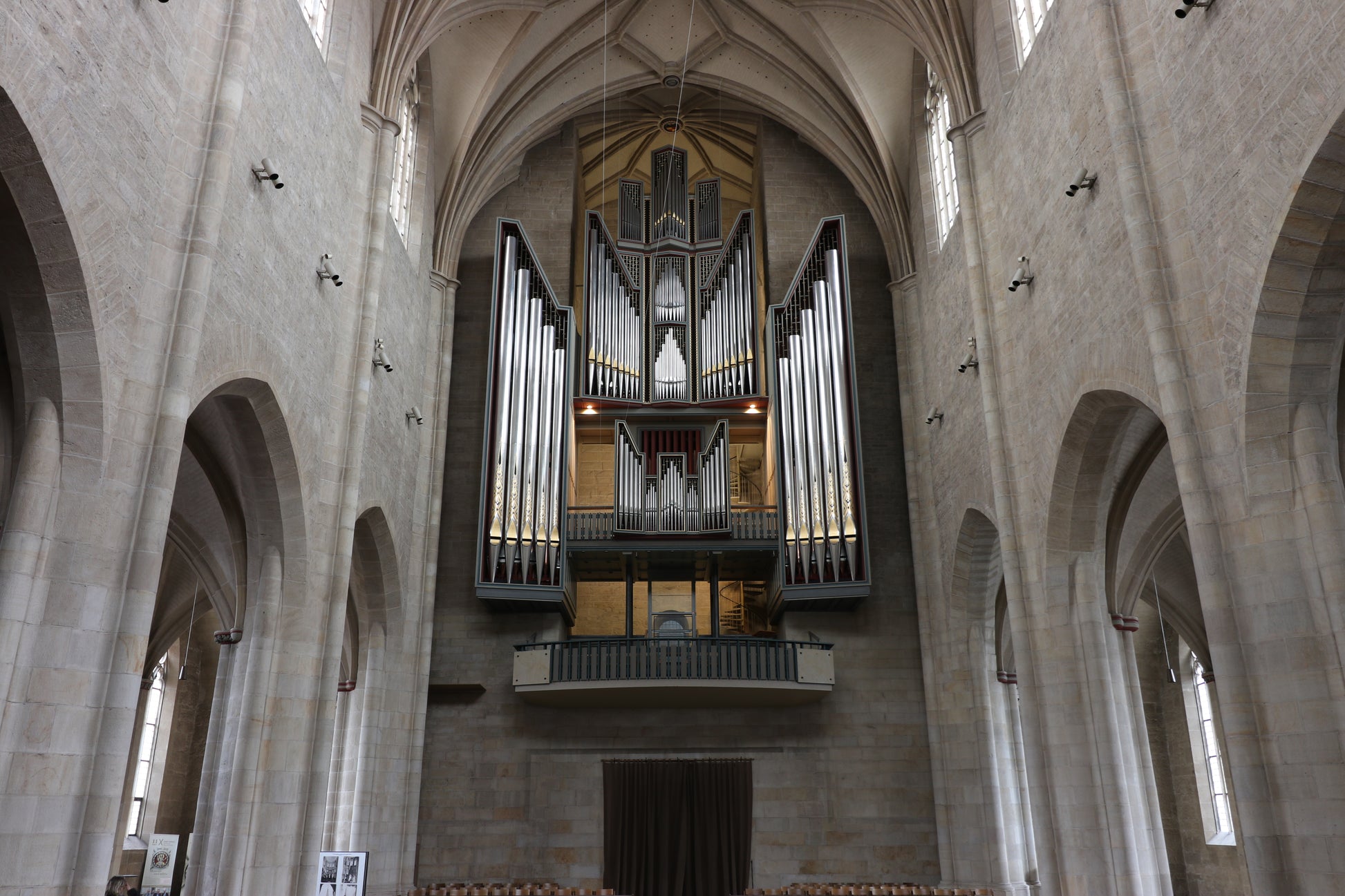
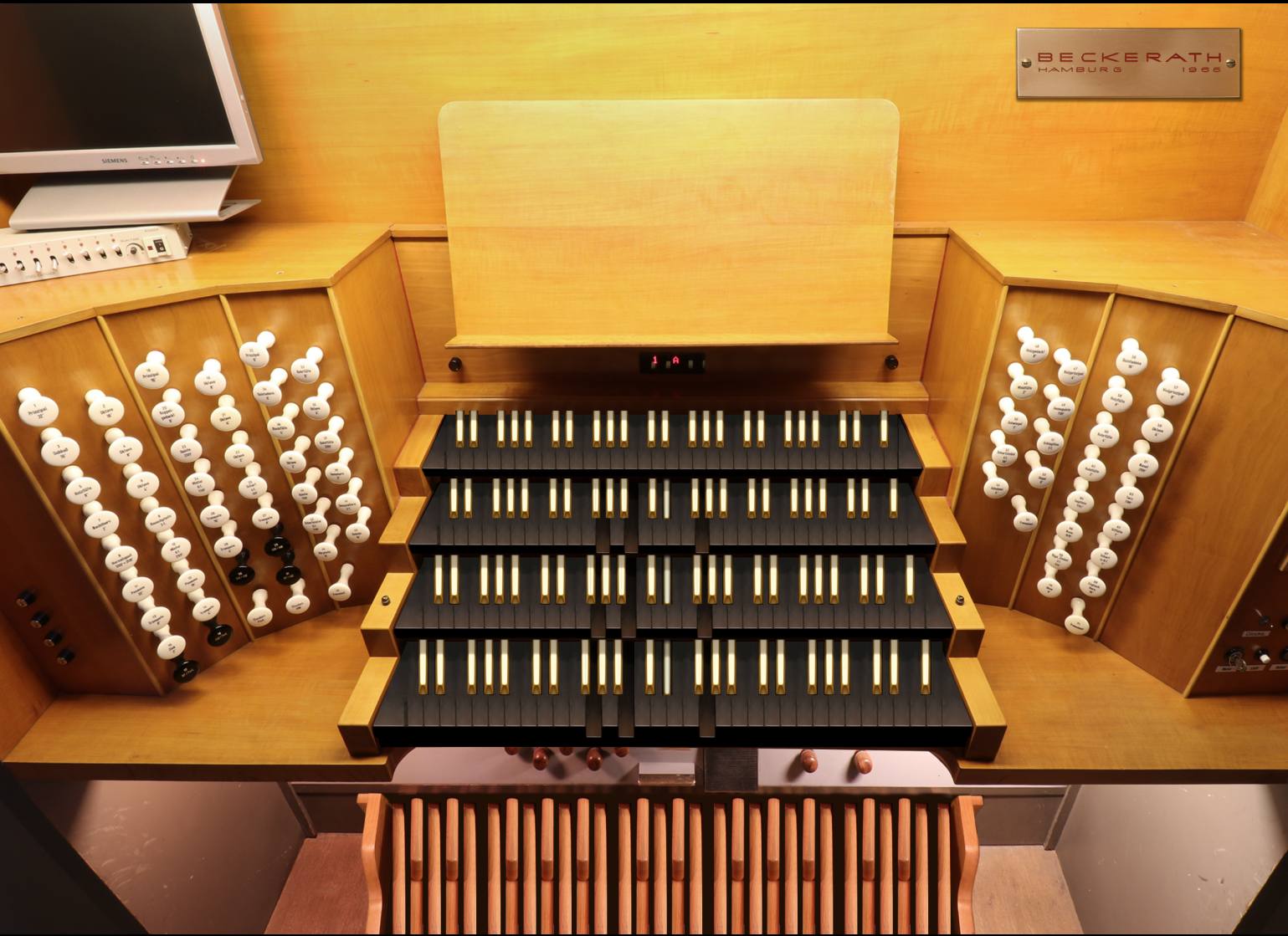
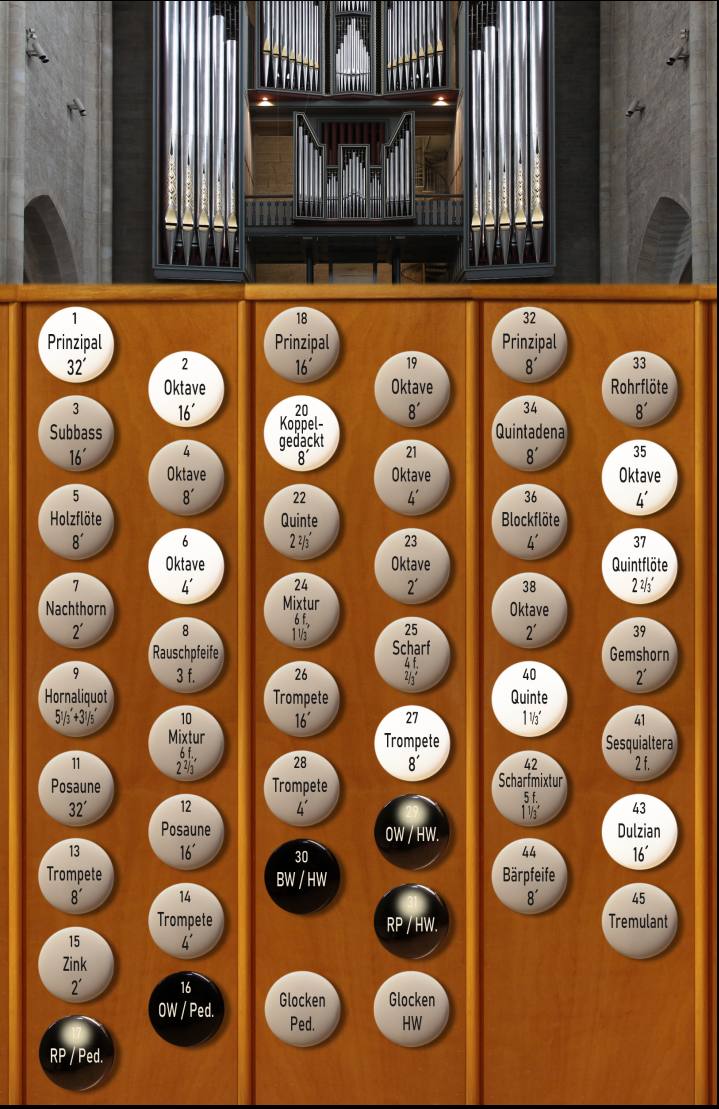
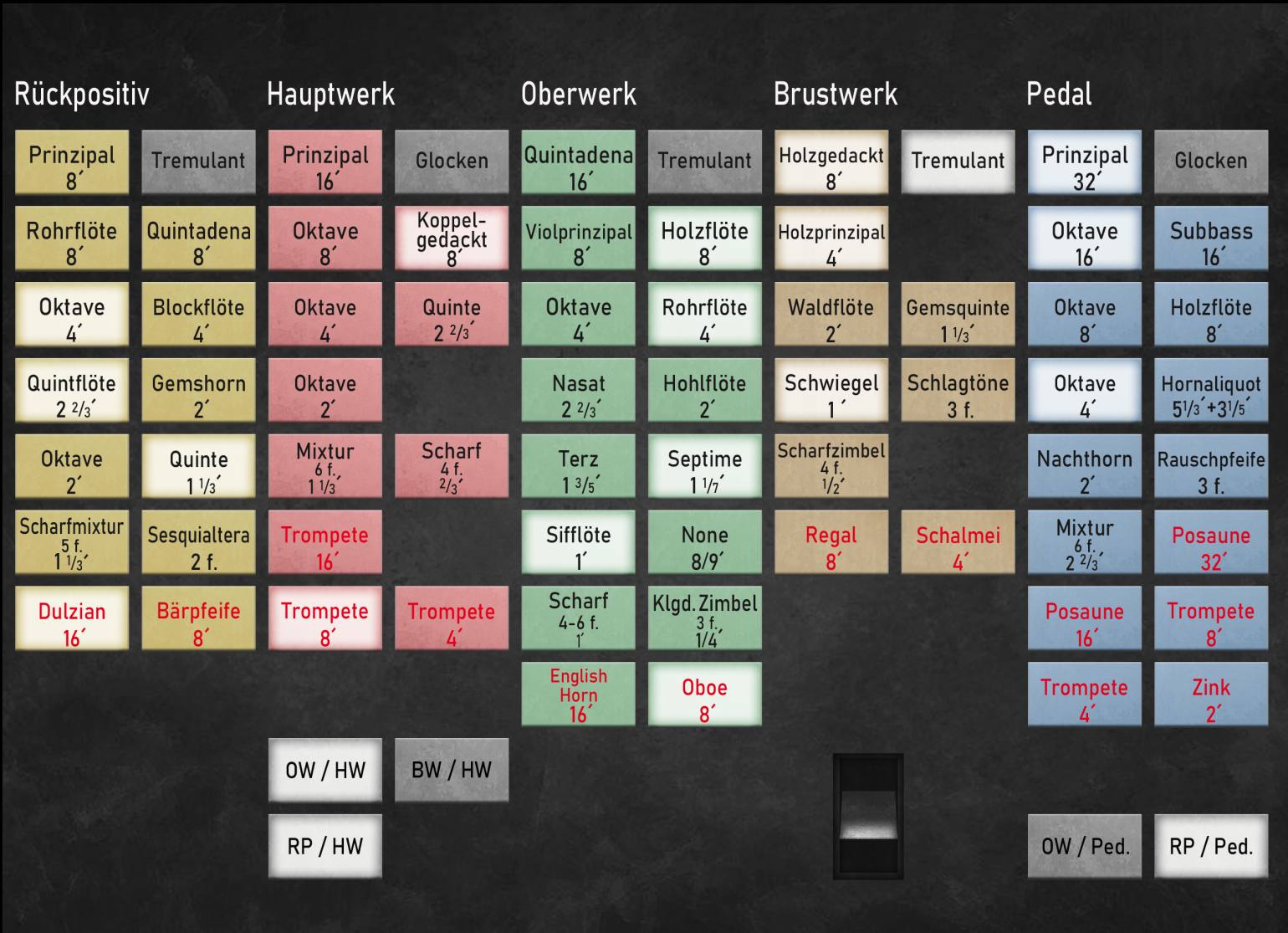
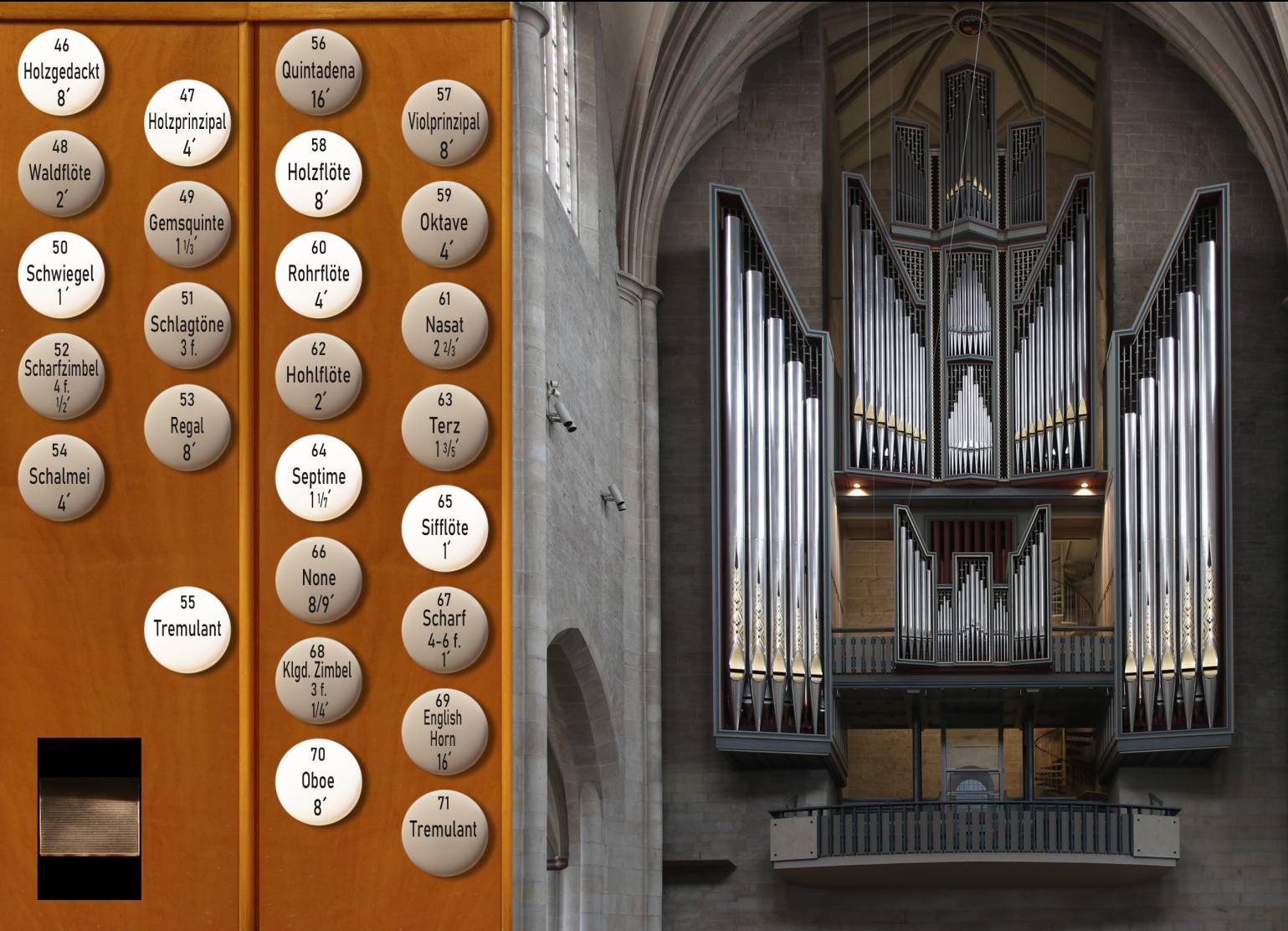
![Casavant, 1995 [Oeuvre principale]](http://artful.shop/cdn/shop/files/ss_casavant1.jpg?v=1693319885&width=533)
![Bückeburg, 1997 [Oeuvre principale]](http://artful.shop/cdn/shop/files/ss_bueckeburg1.jpg?v=1692967628&width=533)
![Schwerin, Dom, Ladegast Organ 1871 [Hauptwerk]](http://artful.shop/cdn/shop/files/ladegast1.jpg?v=1759140126&width=533)
![Segovia, 1772 [Œuvre principale]](http://artful.shop/cdn/shop/files/ss_segovia1.jpg?v=1714213906&width=533)
![Reuter, 1928 [Oeuvre principale]](http://artful.shop/cdn/shop/files/ss_Reuter1.jpg?v=1693321024&width=533)
![Rotterdam Hoofdorgel, 1973 [Hauptwerk]](http://artful.shop/cdn/shop/files/ss_RotterdamMain1.jpg?v=1693279529&width=533)
![Groningue, 1450-1740 [Hauptwerk]](http://artful.shop/cdn/shop/files/ss_Groningen1.jpg?v=1693275425&width=533)
![Frankfurt a.d. Oder, 1975 [Oeuvre principale]](http://artful.shop/cdn/shop/files/ss_frankfurtoder1.jpg?v=1692974219&width=533)
![Piacenza, 1838 [Œuvre principale]](http://artful.shop/cdn/shop/files/ss_piacenza1.jpg?v=1693003521&width=533)
![Lüdingworth, 1683 [Oeuvre principale]](http://artful.shop/cdn/shop/files/ss_luedingworth1.jpg?v=1692998051&width=533)